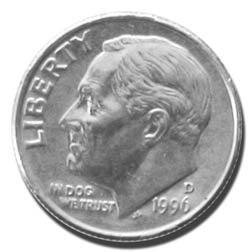
Of course July 4 was Independence Day, America's birthday and wedding anniversary all rolled into one. But only a true patriot and scholar would realize the historical significance of July 5th, the day President-Elect George Washington signed the Declaration of Independence into law. I would wager you haven't heard a single television pundit mention that today is also Bastille Day in France, not to mention D-Day, the day America won the Second World War. You're welcome, mis amis! Ready for some more Very Little Known Facts about today and the country that became the greatest ever in history? (I'm talking about the United States.)
- The Liberty Bell was cast on July 5, 1776, to mark the one month anniversary of America's independence from Great Britain and Northern Ireland. Purely symbolic, it was never meant to be used, which is why it cracked during the Mardi Gras celebration of 1811. Legend has it that should the crack ever be mended, the American Empire will fall.
- The only star on the United States Flag that officially stands for a specific state is the second from the left on the top row, which stands for Betsy Ross’s home state of Kentucky.
- According to the U.S. Geological Survey, there are 140 towns and cities in the U.S. that have the word "America" in their names. Ironically, in 6 of those localities the Fourth Of July, Presidents Day, and Flag Day have never been celebrated as holidays because the towns were settled by Norwegians.
- COINCIDENCE OR CONSPIRACY? Presidents Andrew Jackson, Abraham Lincoln, and John S. Kennedy were all born on July 5. But not in the same year!
- July 5, 1776: Paul Revere's "midnight ride" actually took place at 2pm local time, which was midnight Greenwich Mean Time. And he only "rode" down the street to the First Baptist Church of Boston where he climbed to the steeple and used two lanterns to blink out the Morse code message, "The Hessians are coming!"
- The famous explorer Amerigo Vespucci was named after America.
- WELCOME TO THE JUNGLE: Most ships bringing immigrants to the Land of Opportunity at the turn of the eighteenth century steamed majestically past the gleaming symbol of freedom standing astride the entrance to New York’s harbor, the Statue of Liberty. This regal site was not for everyone on board, however—certainly not. Only those affluent passengers who could afford First Class cabins were allowed on deck during daylight hours. The “huddled masses learning to be free” were stuck belowdecks in steerage where they were shackled together until being unceremoniously dumped on Ellis Island. Even there makeshift barriers made sure none of the riff-raff saw Lady Liberty until they became American citizens.















